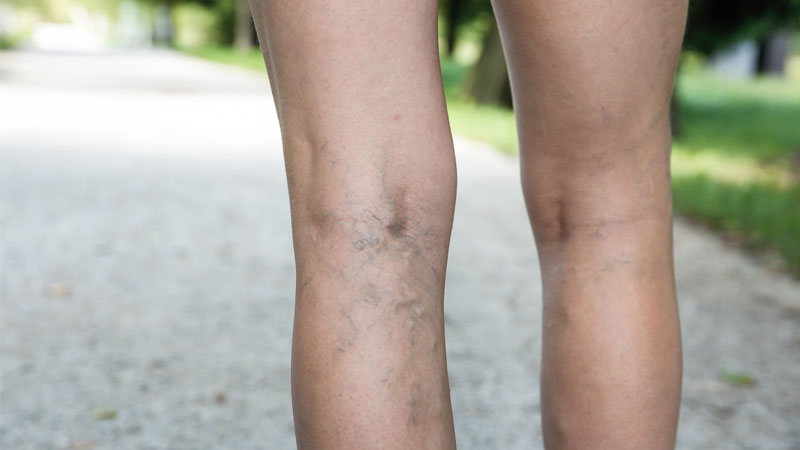Aromatherapy essential oils for varicose veins

Varicose veins are swollen, twisted, painful veins that have filled with an abnormal amount of blood. They are quite common, affecting approximately 1 in 3 people (particularly women). They usually appear on the legs and feet but can also occur on other parts of the body.
What are varicose veins?
Arteries have strong muscular walls that expand and contract to pump oxygenated blood from the heart to other parts of the body. Once oxygen has been delivered to other parts of the body, the veins transport the deoxygenated blood back to the heart. Veins are less muscular than arteries and do not primarily function in a contractile manner. They rely on a series of tiny one-way valves which open and close to let the blood through and prevent it from flowing backwards and pooling in the lower extremities.
Sometimes the vein walls can become stretched and lose their elasticity, causing the valves to weaken. If the valves are weakened or damaged, they can allow the blood to flow back and collect in the vein - causing it to swell and become enlarged (varicose). This restricts the adequate flow of nutrients and oxygen to the tissues and the removal of wastes, resulting in the vein turning purple/blue in colour and becoming lumpy, distended and twisted over time. Symptoms include the legs feeling hot and heavy, sensitive to pressure, aching, throbbing, swollen ankles and feet, cramps (often at night) and itchy, dry skin over the affected area. The legs may also feel restless and tire more easily.
What causes varicose veins?
Various factors can increase the risk of developing varicose veins - from long periods of standing or sitting still, heavy lifting, obesity, poor diet, consumption of alcohol or spicy foods, insufficient liquid intake and lack of exercise, through to extremes of temperature, poor circulation, old age, prolonged bed rest, genetic predisposition, gender and pregnancy.
Research indicates that women are more prone to varicose veins than men, as female hormones are thought to relax the vein walls, making the valves more likely to leak.
Other contributing factors could be wearing tight clothing, high heels or other unsuitable footwear. Strenuous physical exertion or injuries can also damage valves or cause blood clots that destroy valves and impair circulation. As is so often the case, advanced cases of varicose veins are usually caused by a combination of these factors.
Treating varicose veins
Treatment isn’t always required unless the veins are causing discomfort or other complications. Initial conventional treatment might include using compression stockings (if suitable), regular exercise (walking is considered one of the best options), wearing low heels, elevating the legs when resting or sleeping, avoiding crossing the legs when sitting, and avoiding excessive heavy lifting and standing up for long periods of time. If further treatment is required, you will be referred to a vascular specialist who will advise on the various options, which may include surgery (ligation and stripping) to remove the varicose vein).
When treating varicose veins, the factors that cause weaknesses in the venous system all need to be considered, and a holistic approach is required for true and consistent progress. As with most cases, preventing a weakness from getting worse is the best course of action. Supplementing the diet with Vitamins D, E, and C is often indicated, as is increasing the intake of garlic – which is a circulatory tonic and natural blood thinner.
Using essential oils to treat varicose veins
Joannah Metcalfe
Consultant Aromatherapist




